| In the beginning |
(Which isn't to suggest that you can't read these books standalone. You can -- and more on that later. But the more Known Space books you read, the more connections you'll see.)
Alas, circumstances kept Larry from attending the con, and the panel didn't happen. And I'd hate to see my in-advance musing about likely questions go to waste ...
In the following Q-and-A with myself, I've tried to keep spoilers to a minimum. That said, read on at your own peril.
Q: I understand that Larry intended Ringworld to be a single novel. Now we have four Ringworld series books and five Fleet of Worlds series books. (Or maybe it's five and four. Opinions seem to differ into which series Fate best fits.) How did all that happen?
| Once was not enough |
Fleet of Worlds originated in a Worldcon, as it happens, as I discussed in my 2010 interview with SF Signal. Larry and I expected -- and wrote -- Fleet of Worlds to be a single, standalone book. Our publisher had other ideas.
Q: What kinds of questions did fans raise about the Ringworld?
A: Here’s one: Ringworld didn’t address why all the construct's soil didn’t, over time, wash into the seas – and stay there. Ringworld Engineers added features to the landscape (the Spill Mountains – replenished with recycled sea-bottom muck) to explain. But the new novel raised new questions.
Q: Here’s one of those new questions. In Ringworld, Nessus has no idea what to expect on the physical Ringworld. In the sequel, Hindmost knows very well. He equips the second Ringworld expedition with plenty of superconductor cloth. His superconductor is immune to the plague that had, centuries earlier, caused Ringworld civilization to collapse. Hindmost chartered that first expedition, led by Nessus. So: why was Nessus kept in the dark?
 |
| The explosive finale |
Q: The first Ringworld expedition's human and Kzin explorers received as their pay the lone Type II hyperdrive ship -- on which mere hours separated Known Space from the Fleet of Worlds. The explorers were also shown the location of the long-hidden Fleet. Why would the famously cowardly Puppeteers expose themselves and their worlds to such risk?
A: Another very good question -- again not answered till Fate of Worlds. And once more, there’s a devious plot involved.
| Bey's story |
A: Nessus lied. He’s quite good at dissembling and keeping secrets. For the full Long Shot back story, see Juggler of Worlds and Fate of Worlds.
Q: Returning to intrepid pilot and explorer Beowulf Shaeffer, several of the earliest and best known stories of Known Space involve him. Bey has a stepson named Louis Wu. Is this the same Louis Wu who much later explores the Ringworld?
A: Beyond the name coincidence, Bey’s stepson is the right age. Still, for a long time the relationship -- if any -- was left ambiguous. Louis of Ringworld knows about the discovery of the supernova chain reaction at the galactic core, but refers to “the former pilot” of the Long Shot without any show of familiarity.
 |
| Louis Wu, pre-RW |
Q: When Louis, Teela, and Speaker to Animals briefly visit the Puppeteer home world (in Ringworld), Nessus gives them a whirlwind tour via teleportation devices called stepping discs. The only Puppeteer they encounter -- on a world with one trillion inhabitants -- is a hologram named Chiron. Yet in the pre-Ringworld story “Neutron Star” (about two hundred years earlier), enough Puppeteers have entered Known Space that Bey encountered a Puppeteer bartender. Clearly some Puppeteers can handle being around aliens. So why did everyone on the home world hide from Louis et. al.?
 |
| A new beginning |
Q: “Neutron Star” also introduced readers to the paranoid government agent Sigmund Ausfaller. Bey Shaeffer meets Sigmund on the colony world We Made It, in the Procyon system. A few years later Sigmund and Bey meet up again, this time on Jinx, in the Sirius system, leading to Bey’s adventure at “The Borderlands of Sol.” Coincidence?
 |
| Conspiracy theory |
Q: Is Juggler pretty much a retelling of the Shaeffer stories (collected in Crashlander)?
A: Yes and (mostly) no. Juggler opens well before, with the story of Sigmund’s recruitment into the intelligence service. Juggler continues well after the final Shaeffer story has ended. Where events overlap, Juggler's version generally begins earlier, continues well past, and is experienced from a different character’s point of view. The newer version reveals meanings not visible to Bey.
Returning to "At the Core," we have a Shaeffer story about a solo pilot’s discovery of the supernova chain reaction at the galaxy's center. "Into Thin Space," the section of Juggler on related matters, unfolds on Earth. This narrative is driven by news of Bey's discovery, and focuses on the Puppeteer evacuation of Human Space and the United Nations reaction to the Puppeteers' disappearance.
Q: Per Ringworld, the Puppeteer who calls himself Nessus had been in Human Space for 300 years. What’s he been doing all that time?
A: A great deal, as it happens, and the telling takes most of the Fleet of Worlds series.
| A Pak protector |
 |
| Pak secrets revealed |
A: Those questions are answered -- as part of a much larger story involving the Pak -- in Destroyer of Worlds.
Q: What’s the big picture of how these two series relate?
A: The Ringworld series unfolds almost exclusively on and near the physical Ringworld, dealing with crises of the Ringworld. What we learn of other regions and eras of Known Space is mostly back story. Though in Ringworld we catch a glimpse of the physical Fleet of Worlds, we don’t get to investigate Puppeteer society.
The Fleet of Worlds series, in contrast, takes place mostly on and around the physical Fleet of Worlds -- but the Fleet is moving, often at relativistic speed. Over more than two centuries of the series story arc, "around" the Fleet takes in a lot of territory. We learn a great deal about Puppeteers and several other species, including -- new in this series to Known Space -- the aquatic, group-mind-forming Gw’oth and the flying-squirrel-like Drar. In the process, many of the interstices of Known Space history are filled in.
With Fate of Worlds, the two series collide. With a bang.
Q: Thank you, Ed.
A: You're very welcome, Ed. (Demonstrating once again that two Eds are better than one.)
====
Phew. That's a lot of stuff. But wait, there's more!
For a few thoughts about reading order, (sub)series, and which books best stand alone, check out "Of fleet Fleets and Known Space."
For a title-specific post about a particular Fleet of Worlds series novel, click the corresponding cover in the skinny right-hand column of this (or any) post on this blog. For series plot summaries and favorite review quotes, head on over to the biblio page on my website.





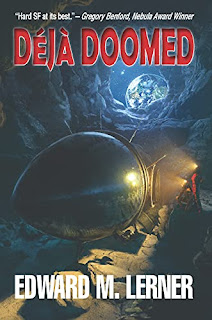
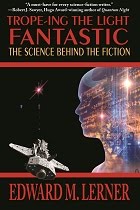

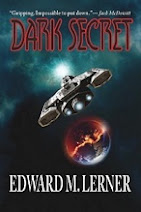
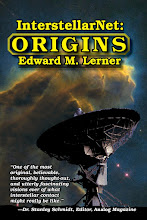



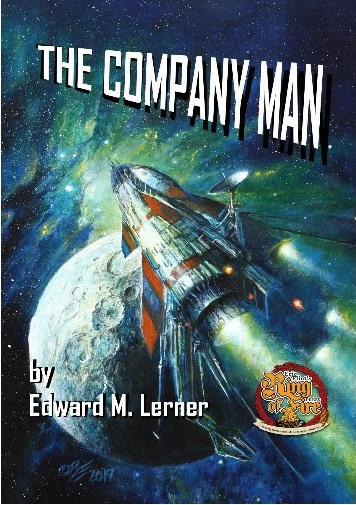








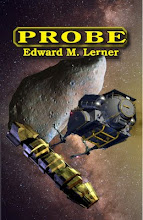






2 comments:
Ed, you son of a gun, I'm gonna ply you with liquor and steal all your secrets!
Just got Fate of Worlds the day before yesterday and for the first time since I was a kid, I read a book from start to finish in one sitting. Finished at 8:00 AM, and NO, I was not in nightowl mode! I am SOOOO thankful I waited until my day off to get it because my brain is still fried, and all because you couldn't have the decency to put in a break in the action so I could go to bed.
Warning, folks, do NOT plan to operate heavy machinery within 48 hours of reading this book because YOU CANNOT PUT IT DOWN. Cancel any appointments which require a shower beforehand too. And be careful not to eat anything greasy before starting to read or you may spend the last few hours sitting on the toilet because you're too afraid you might accidentally wipe with the wrong hand. (OTOH, this book makes for a great diet because you can't even stop to eat!) Do not expect yoru significant other to understand, simply get them their own copy of the book so they don't pester you.
I don't know how you can live with yourself, Ed. Doing this to us. Is this all part of some nefarious plot to make us read the rest of your books? Because as this series has progressed, it's gotten better and better. I'm sure you can justifiably shove it in Larry's face and say, "See!? The more of this series you let me write, the better it got!"
Watch out, man, cuz if I ever see you, I'm liable to drag you kicking and screaming into the nearest refreshment establishment and force you to drink your weight in your beverage of choice and then steal your computer.
:-)
Post a Comment